
To be a successful alliance professional, you’ve got to think like a CEO.
Alliance building is about taking a solution to market. Your hands are all over everything — go-to-market, sales, marketing, and more. You have to think of yourself as a huge supporting function, but unlike sales, you can’t claim you landed the prize alone.
In fact, the difference between an alliance professional and a salesperson is that an alliance professional doesn’t get to kill what he or she eats, as Don Jones put it in today’s interview.

Don is an experienced alliances leader who has worked for companies like HP and Microsoft in the information technology and services industry. Today, Don serves as Senior Vice President, Alliance and Ecosystems at HCL Technologies — where he directly manages HCL’s most strategic partner: Microsoft. Don started his career in alliances with Microsoft, then went to a consulting firm and now is at HCL. But all that time, he’s worked with Microsoft.
We caught up with Don in his Seattle-based office, to talk about building alliances among complex companies.

What’s happening in alliance building right now?
“What we’re seeing more and more in the alliance ecosystem broadly,” Don said, “is there are very few two-way plays left anymore. Most of these things require a three-way play.”
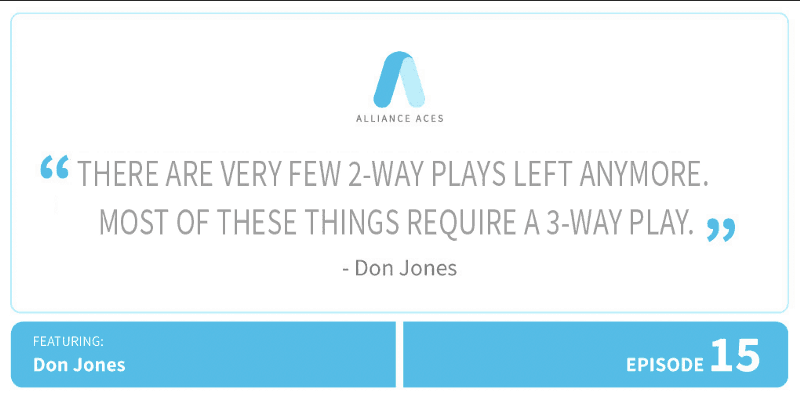
For example, HCL works with Microsoft to re-platform independent software vendor (ISV) solutions on Azure. HCL wants to help these ISVs take advantage of Azure, the public cloud, and all of Microsoft’s solutions.
“As you can imagine there are thousands of ISVs,” Don said.
These vendors are trying to figure out how to SaaS-ify their solutions as soon as possible, and they need what Microsoft can offer — from the smallest options — to those as big as turning on huge data lakes or AI and machine learning.
“HCL’s business model is going to be kind of different,” Don said. “What we’re looking to do is partner with these ISVs from a new business model standpoint. So, we’ll actually take the burden off that ISV relative to the cost of doing that migration, and then we’ll take a percentage of the ongoing revenue.”
HCL is the first partner with Microsoft who saw the opportunity to triangulate with all these ISVs, the system integration skills of an IT enterprise company, and Microsoft’s great evangelism with ISVs.
The alliance’s success is critical since, as Don said, “We’re making big investments and so is Microsoft.”
Complex relationships like this one are always 360-degrees. Microsoft is a great customer of HCL, and HCL is a great customer of Microsoft. It helps when HCL recommends products to customers when they are a major user of those products themselves.
What are the distinctions between alliances and sales?
As an alliance leader, Don told us, he creates the go-to-market and the solution-sale, but he doesn’t take down the sale. That’s because a salesperson is tied to closing a deal, but an alliance professional is a type of CEO who is looking left-to-right on solutions and the go-to-market.
Don takes issue with the historic idea that alliances are where bad sales people go to die. In fact, you can’t be a bad salesperson and good at alliances.
That’s because it’s the alliance person’s role to see opportunity, and then pull together the right collateral, case studies, references customer, and testimonials. Together, the alliance-builder and the salesperson visit the decision maker at the customer.
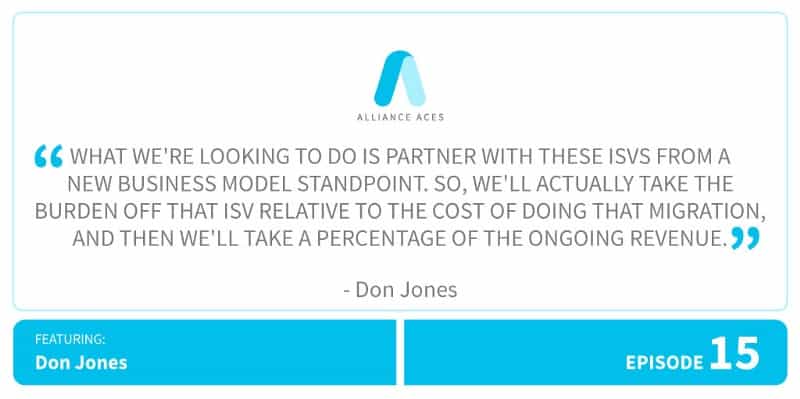
What does it take to succeed in alliances?
First, there is both an HQ-to-HQ alliance function, which focuses on global alliances and go-to-market, and there’s a field-to-field alliance led by the geographic people who are driving the deals day-to-day. These two alliances should be measured differently. The first is measured around solution creation — while the other is incentivized based on deal closure.
In general, however, success depends on 3 factors:
- Getting the right people, in the right jobs, at the right time, and with the right attitude. Each partnership will require a different kind of person. If it’s a solutions-oriented partnership, you need an engineering type. If it’s a broad-based marketing partnership, you need a marketer.
- Massive, complete, and total segmentation. You have to understand the vendor, the competitor, and the go-to-market strategy — then parse all that to see how both companies can earn money. Moreover, you need to segment by market size, industry, and price point — as well as maintain a scorecard that shows success for both organizations.
- Having a lot of support from senior leaders. The c-suite has to be invested in the value of alliances.
Get clarity around what it is you’re trying to do with a partner, especially a big partner like Microsoft. Then, define the areas where you’re going to go big, go deep, and go loud. And finally, remember that your goal is to be first, best, or only partner.
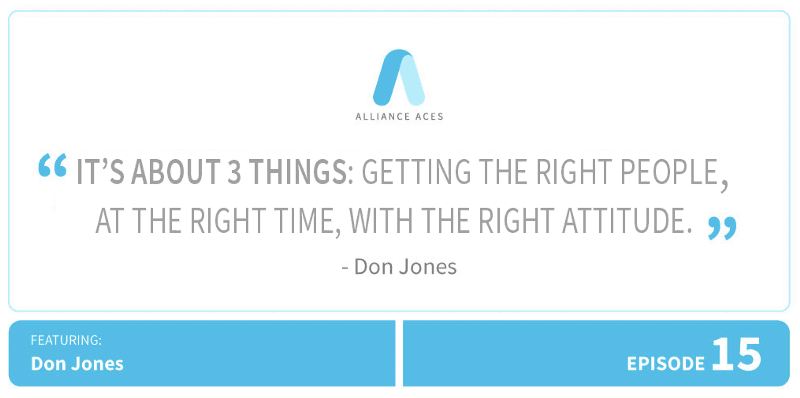
What practices help you progress in complex alliances?
Don named 3 practices that have carried him to success.
- Find the right people and then totally empower them. People are motivated personally and professionally, and as an alliance builder, you need to understand their motivations. The alliance people have to know the key leadership at both companies well enough to understand their motivations.
- Have a CEO’s mentality. “You’ve really got to be able to think left to right,” Don said, “understanding all the bits of it.”
- Create and execute a vision that the CEO buys into. Your role is not to take notes and execute on the CEO’s vision. It’s to establish your own vision. In fact, Don said, “The alliance guy who is sitting in the back of the room taking notes is the guy I don’t want in the room with me.”
What does the future of alliances look like to you?
“You’re seeing more and more separation,” Don said. “At a lot of companies, historically you had channels and alliances together. But they are two completely different sales motions.”
Companies are now separating channels from alliances to create alliances or an alliances/ecosystems structure.
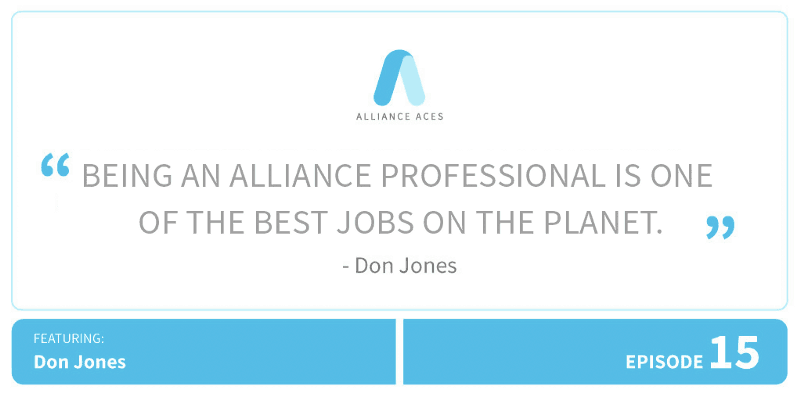
To contact the host, Chip Rodgers, with topic ideas, suggest a guest, or join the conversation about alliances, he can be reached by:
- Email: chip@workspan.com
- Twitter: @chiprodgers
- LinkedIn: linkedin.com/in/chiprodgers
And don’t forget to listen and subscribe to the Alliance Aces Podcast, or visit our dedicated Alliance Aces page.

Heading
Heading 1
Heading 2
Heading 3
Heading 4
Heading 5
Heading 6
Lorem ipsum dolor sit amet, consectetur adipiscing elit, sed do eiusmod tempor incididunt ut labore et dolore magna aliqua. Ut enim ad minim veniam, quis nostrud exercitation ullamco laboris nisi ut aliquip ex ea commodo consequat. Duis aute irure dolor in reprehenderit in voluptate velit esse cillum dolore eu fugiat nulla pariatur.
Block quote
Ordered list
- Item 1
- Item 2
- Item 3
Unordered list
- Item A
- Item B
- Item C
Bold text
Emphasis
Superscript
Subscript



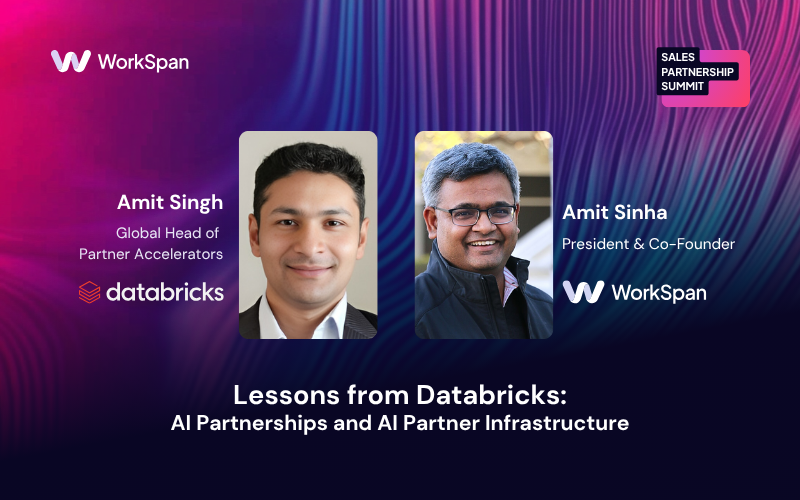

.png)